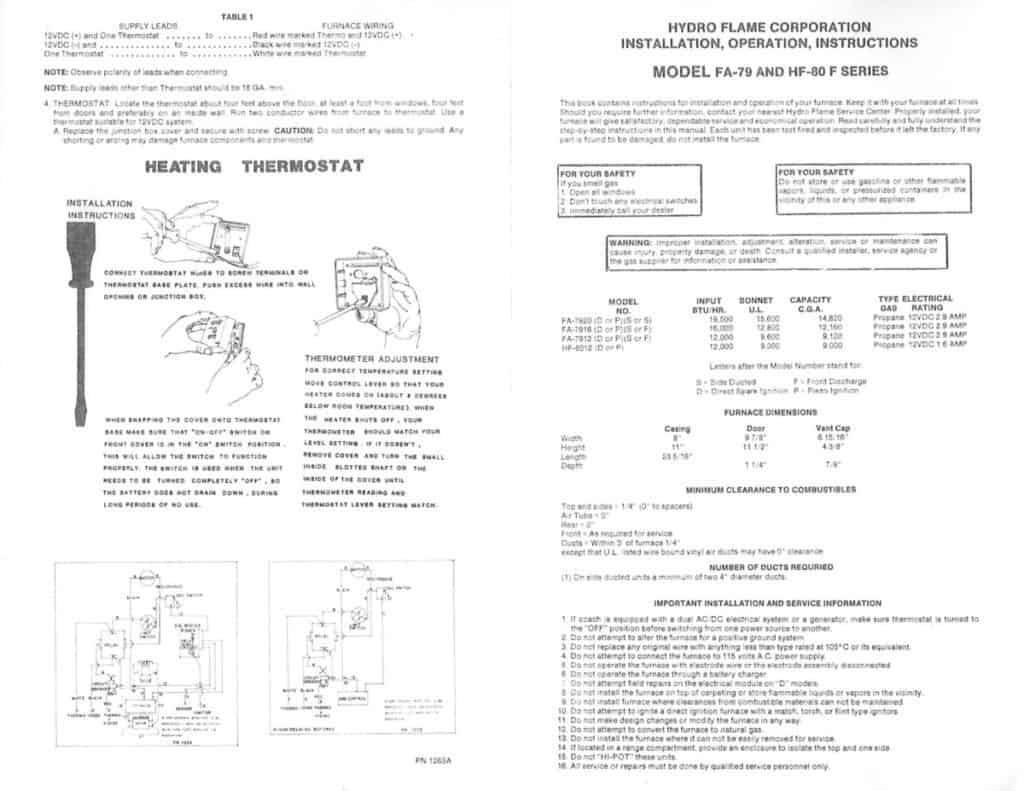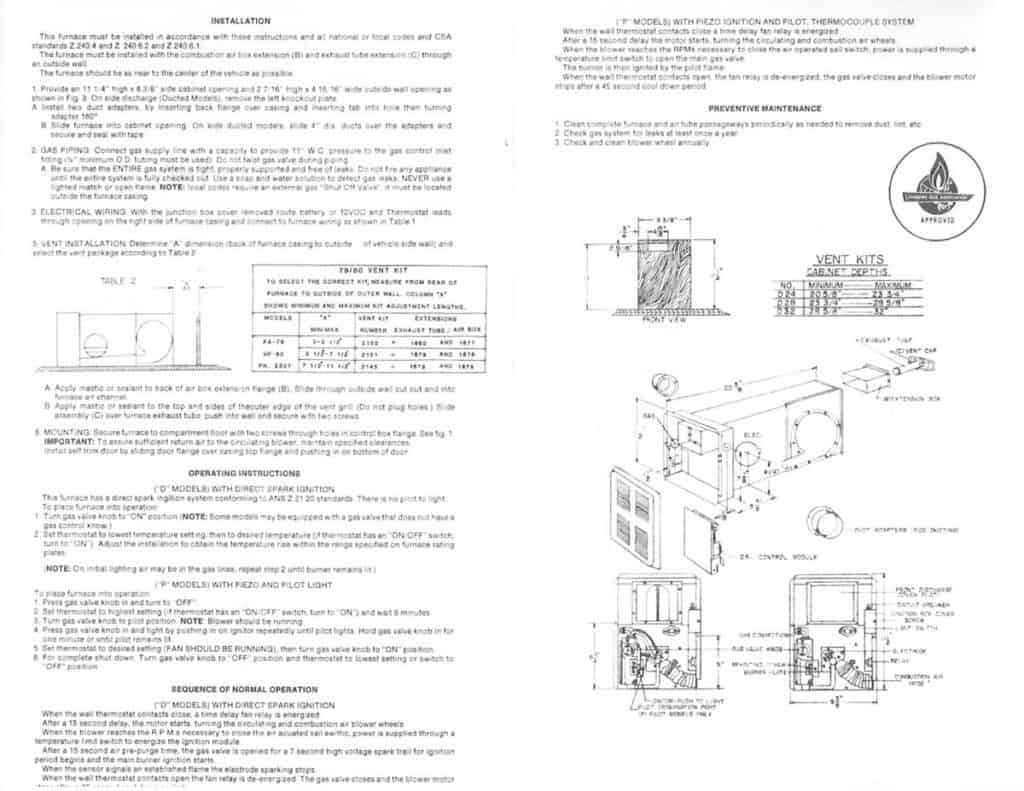If you own a truck camper, pop-up camper, or travel trailer, then you likely have a furnace installed in your camper. As these furnaces age, they might not work as well as they used to. Follow along with us as we troubleshoot Reggie’s camper furnace from the 1970’s.
A propane camper furnace is fairly simple. Here are a few items you can check yourself. First, make sure you have power and propane going to the furnace, and the thermostat is on, and set to the highest temperature. If it doesn’t operate normally, the thermocouple is a common cause. Other reasons are a bad regulator, high temp shut off switch, circuit board, broken wires, circuit breaker, and a dirty orifice to name a few.
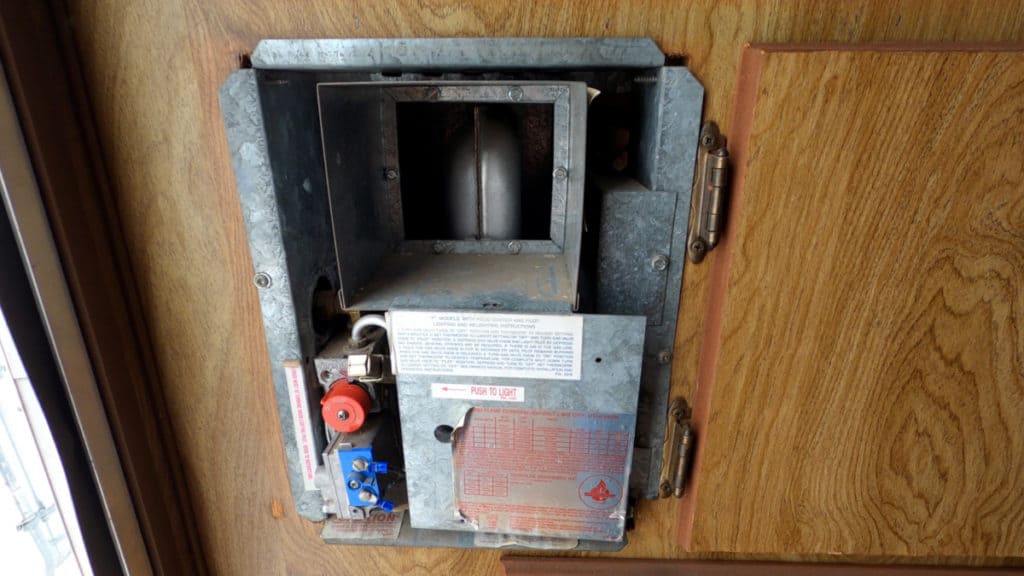
In this post I will be troubleshooting the Hydro Flame Model FA 79 and HF 80 F Series. I believe this furnace is made by Atwood. Here is the manual for this furnace. Click on the photo for full resolution file.
You can watch us troubleshoot our furnace in this video
How a Camper Furnace Operates
To fix a camper furnace, you need to know how it operates. If you have a forced air furnace in your home, its very similar to that, just smaller.

Lets start at its fuel source. Most camper furnaces will run off a 20lb propane tank. If you have a larger RV, then you might have a bigger tank. There should be a gas line attached to the tank with a pressure regulator. The gas line will run to your furnace, but will also split to run other things like a stove top or water heater.

Now it needs power, mainly to run the blower fan, and power the circuit board. Your furnace will run off of 12 volts DC. Even if you are plugged into electrical power, your power inverter will change the 120 volts AC to 12 volts DC before it goes to the furnace.
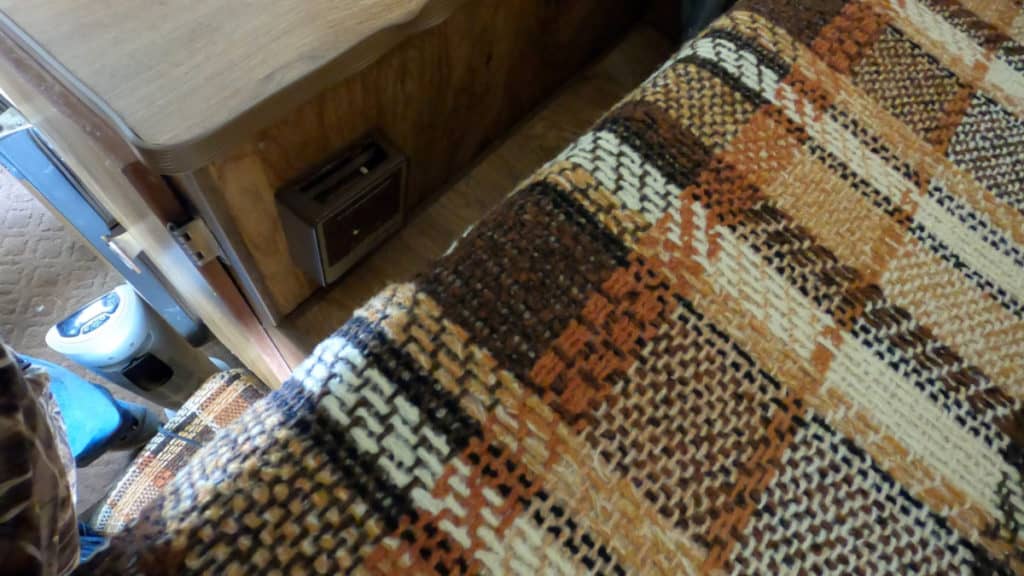
To control the furnace you will use the thermostat. Reggie’s truck camper has a thermostat between the fridge and mattress, making it hard to see. It will have an off/on switch and a temperature control.
Start Sequence of a Furnace
To start the furnace, make sure the propane is turned on and the power is on. Then turn on the thermostat and turn the temperature all the way up. The blower fan should turn on. If the pilot light is lit, ( I will discuss that part later) you will hear a click, this is the gas valve suppling gas. Then you will hear a “puff” as the the gas ignites. Soon after you should feel warm air.
Troubleshooting An Old Camper Furnace
In our case, the furnace would start normally, but after a couple of cycles, the pilot light would go out. The furnace would not start again without relighting the pilot light.
Newer furnaces have electronic ignition. This furnace, being older, has a pilot light that you have to manually light.
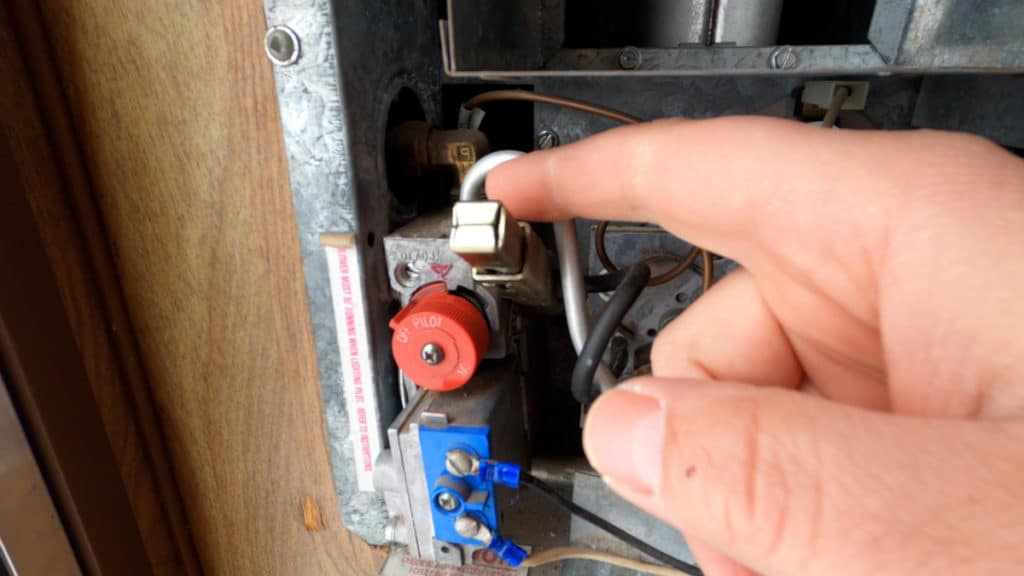
To light the pilot, you will red to turn the red knob to “Pilot” and push it in. When you push in the knob, it will allow gas to come out so you can ignite it. It is important that you hold this knob in for 15-30 seconds after the pilot lights. Then you push the silver button (the one my finger is on). This creates a spark. There is a small hole you can look through to see if the flame is lit.
Checking the Thermocouple
Once the pilot is lit, it will heat up the thermocouple. The thermocouple creates a small voltage when heated. This voltage is transmitted to the gas valve, which will then keep the gas flowing. At this point, you can release the red knob and turn it to “on”.
If your pilot light wont stay lit after releasing the red knob, then the thermocouple is a likely candidate for the problem.
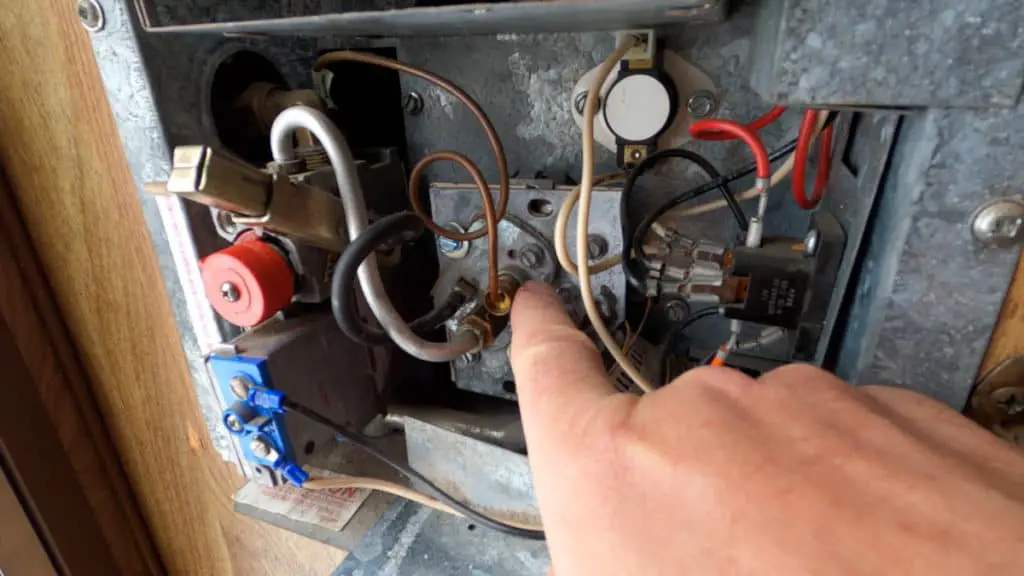
You can find the thermocouple by looking for the copper line. One end will be going inside the furnace, and the other end goes to the gas valve. You will have to unscrew the thermocouple from both ends to remove it. It can be tricky and you might have to remove some components to reach it.
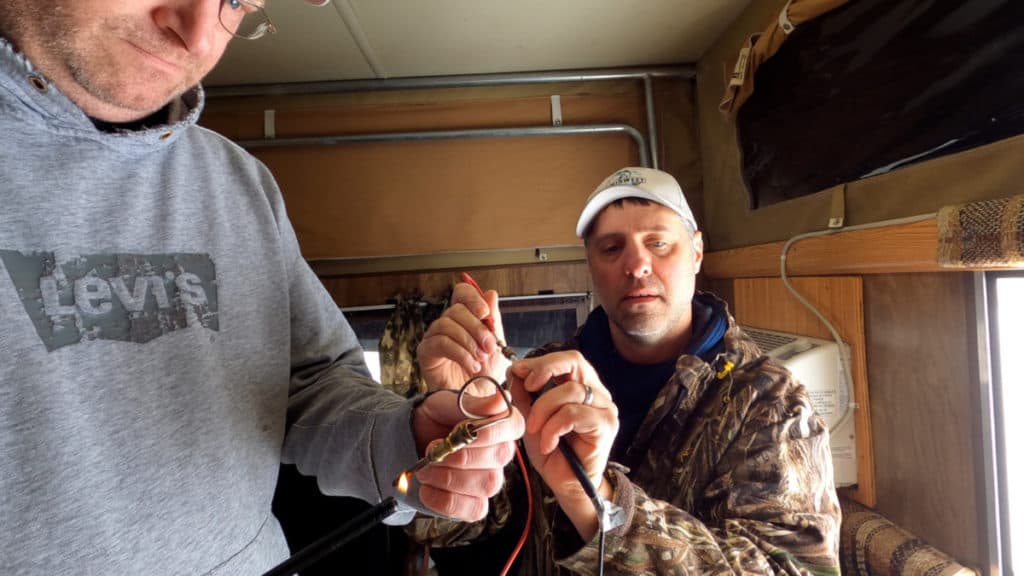
Once you have it removed, you can test it with a multi-meter to see if its the problem. On the end that goes into the gas valve, put the negative lead on the copper wire and the positive lead on the end of the wire. It helps if you have a friend to help with this part. Have them put a flame to the probe end that goes into the furnace.
With your voltmeter set to DC volts, you should get a reading when the flame is applied. It should get a reading of 30-40 millivolts. if its less than 25 millivolts, then you should replace it.
I accidently had my voltmeter set to AC volts and couldn’t get a good reading, so we went and bought a new thermocouple. Learn from my mistakes, and make sure you are using DC volts. This universal thermocouple pictured above worked good. You can get them a most any hardware store, or you can just order it from Amazon here.
Pressure Regulator
It turns out the thermocouple was not the problem. After careful observation, I noticed the pilot light was puffing, like it was on the verge of going out, and it was doing this about once every two seconds.
Low pressure in the propane line is a possible cause of this symptom. First thing to check is that your propane tank has enough propane in it. Then check all the fittings and make sure everything is tight. If you have other propane appliances like a stovetop, you can turn that on to see if its operating normally.
If your pressure seems low (or high), a possible cause is a bad pressure regulator. Once again, you can find these at hardware stores, or get one here.
After installing a new regulator, we were still experiencing the same problem. I had a feeling it still had to do with a lack of propane, so next I took apart the orifice where the gas comes out to feed the pilot flame.
Dirty Orifice

Only two screws held in the panel that contains the thermocouple, orifice, and igniter. If you can’t get the pilot to light, make sure the igniter is giving off a spark. Sometimes you just need to reposition it close enough to metal to create a spark.
On the end of the orifice is a cover that directs the flame upward. Remove this cover with a pliers. Now you can look through it to see if it is clogged.

You are looking straight through the orifice and can’t see daylight, so this tells me that it is clogged. This furnace is from the 1970’s and over time enough rust has built up to plug the hole.
We used a paperclip that we bent straight and pushed it through. Then used an air compressor to blow it out. The hole is only big enough for a needle to go through. Now we can see a pin hole of light coming through it.
After testing it out several times, the furnace worked perfectly. This solved our problem. Now lets discuss a few other things that could be problems in case your problem is different.
Other Possible Causes
Circuit Breaker
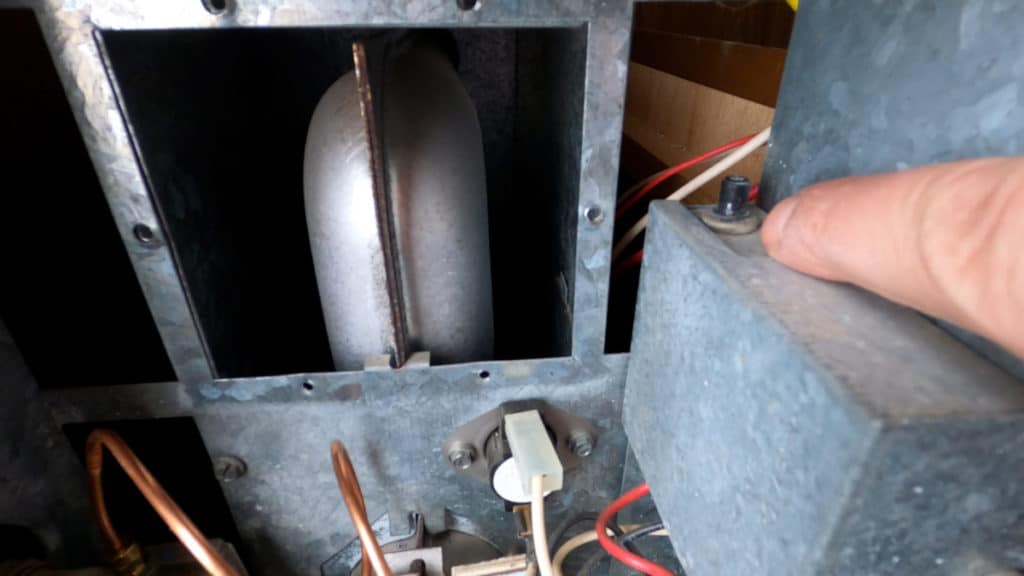
If your furnace doesn’t seem to be getting any power. You can check this circuit breaker found on the inside. This is a real simple fix. Just push it back in. Obviously this only works if you have power going to the furnace, which brings up the next problem
Wiring
Sometimes wires can come loose. Take a look around and see if there are any wires hanging free that look like they should be attached somewhere.
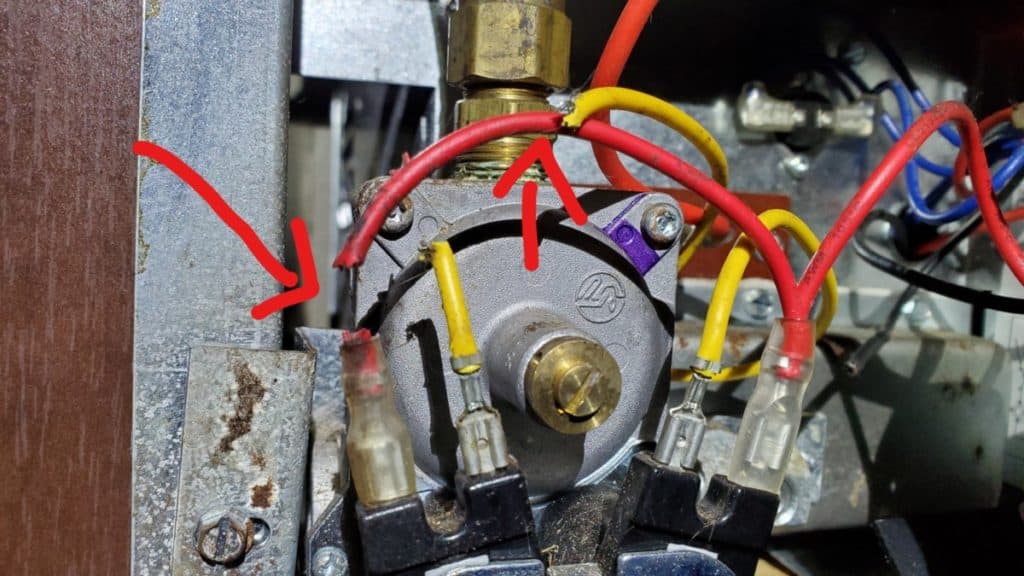
Mice love making homes in our camper, especially during the winter or anytime you store your camper for a long time. Here is a photo of the furnace in my Coleman travel trailer. I’ve been having a lot of mice issues. Look at how they chewed through many of the wires. This should be obvious just by looking at it. You can usually smell when mice have been there too.
Thermal Control Switch
If your furnace powers up and the fan blows, but it won’t ignite, the thermal control switch could be the cause.
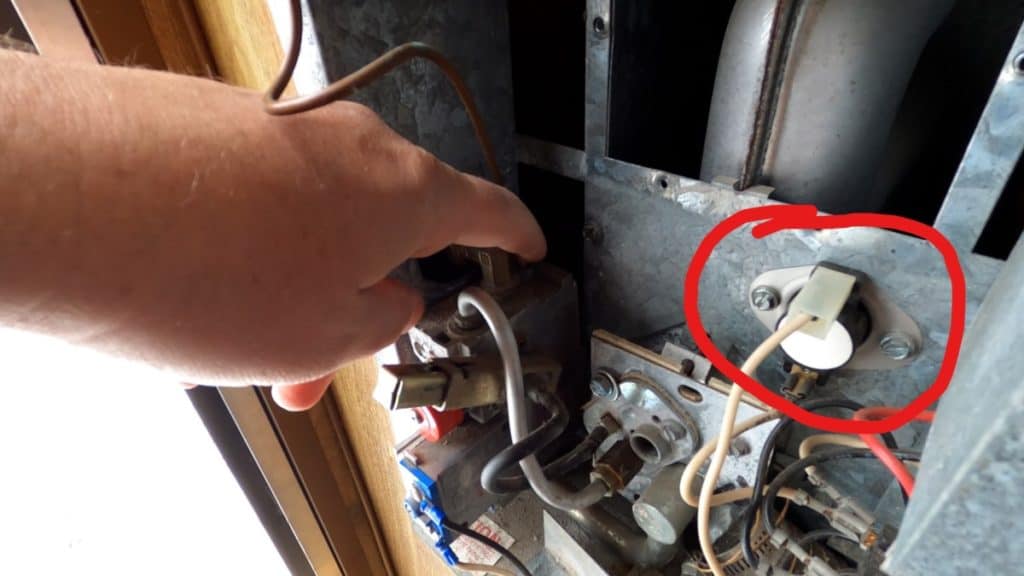
This switch detects an overheating problem and shuts off the gas supply. You can find it screwed to the back wall of your furnace. Its very simple to remove and should have two wires attached to it. Most likely it is a normally closed switch. When it detects an overheat situation, it opens and shuts the furnace down.
Pay attention to the temperature it shuts off at and if its normally closed or open. It will likely be one that has a limit of 125 degrees Celsius and is normally closed (NC), like the one pictured above. Check the writing on the top of yours to match it up. Click Here to see the one pictured above.
Circuit Board
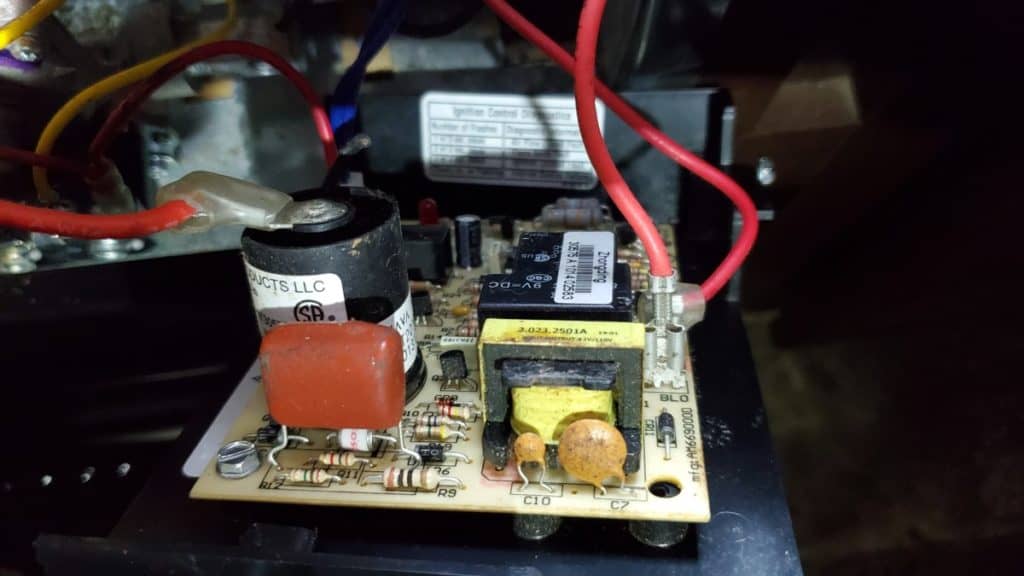
It is possible you have a problem with the circuit board that controls the furnace. You will need someone more qualified than me to help you with that, but I would start by looking for any obvious defects like burn marks or broken pieces.
Gas Valve
The gas valve or gas regulator is a possible cause if it doesn’t seem to be getting any gas. This is another big ticket item and you might have to bring it to a repair shop for this.
Conclusion
There is a good chance you can fix your camper furnace yourself by trying a few of the things I mentioned above. This is not an all inclusive list and I am not an expert, but if you have average mechanical skills then you should be able to tackle this project.
The cost to have someone else repair anything associated with campers, especially the furnace, can get very expensive. Hopefully it is one of these simple solutions that you can do yourself and save a TON of money.
If you have any other tips or tricks to add to this list, you can email me at: rande@gomidwestfishing.com

